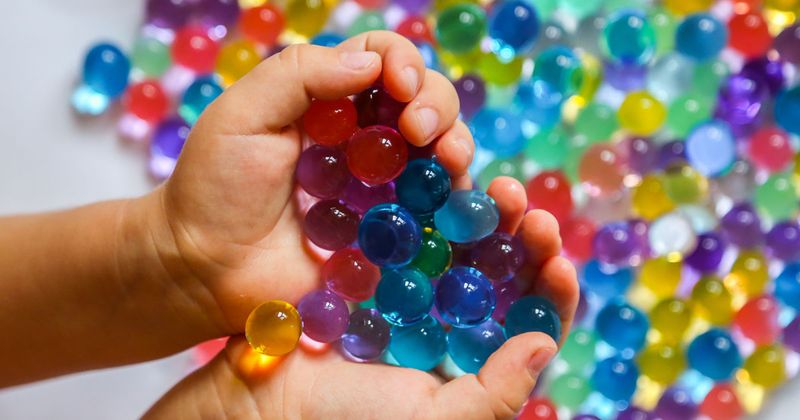Water bead ingestion may cause bowel obstruction in young children
Key takeaways:
- Out of 89 patients with bowel obstruction after ingesting water beads, 84% had to undergo abdominal surgery.
- GoLYTELY reduced the size of the beads by 37% within 12 hours.
Superabsorbent polymer beads that are often used as toys or decorations can cause bowel obstructions in young children, which may require surgery, according to research presented at the AAP National Conference & Exhibition.

“Water beads are available online and at big stores that carry toys or garden supplies, as well as craft stores,” Bryanna Emr, MD, FACS, assistant professor of pediatric surgery and medical director for the pediatric trauma program at Penn State Health Children’s Hospital, in Hershey, Pennsylvania, told Healio. “They are often given to children as sensory toys for play. Other uses include soil hydrating uses and in decorations. The beads are small and colorful, making them fun to play with and easy to swallow.”

Superabsorbent polymer (SAP) beads can expand up to 400 times their original size when exposed to liquids, and although most pass through the gastrointestinal tract on their own, they can cause bowel obstructions that require surgery, Emr and colleagues wrote.
Emr and colleagues conducted a systematic review of 46 studies involving bowel obstructions after ingestion of SAP beads with a total of 89 patients (64% girls; mean age, 14.2±4.6 months).
Almost all patients experienced vomiting (92%), and about half had a distended abdomen (48%). Abdominal X-rays rarely showed the obstruction, whereas ultrasound was successful at identifying the foreign body in most cases.
Most patients (84%) had to undergo abdominal surgery to remove the beads, which were an average of 33.7 (±8.3) mm upon retrieval.
Almost one in five cases had postoperative complications, of which the researchers said a majority were reoperations to remove beads that had not been found the first time. One mortality was reported.
Emr and colleagues also conducted an in vitro experiment testing different liquids’ ability to shrink the beads. GoLYTLEY, a hyperosmolor solution, reduced the size of the beads by 37% within 12 hours. Gastrografin, prune juice and acetylcysteine were also effective at shrinking the beads.
“We encourage all families to educate themselves about the safe use of water beads and to supervise children closely during play,” Emr said. “Keep water beads out of reach of young children when not in use. Store them in a secure container to prevent accidental access.”

